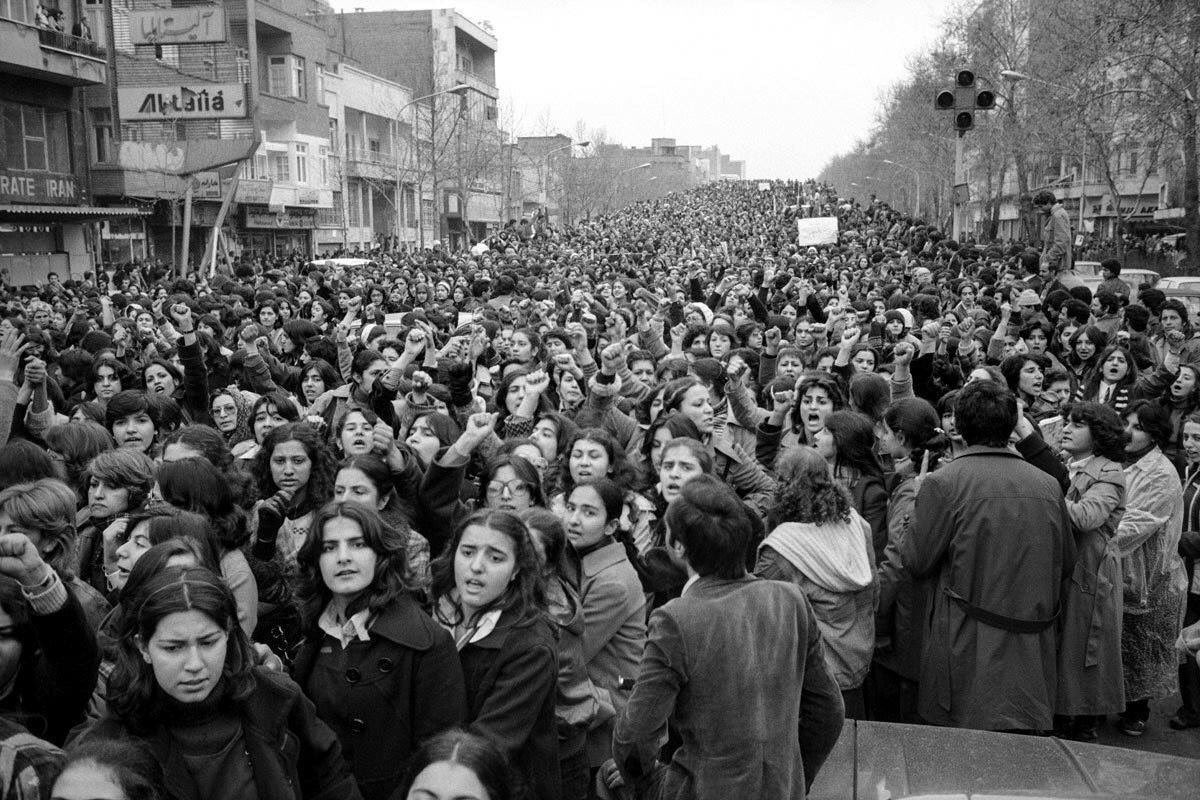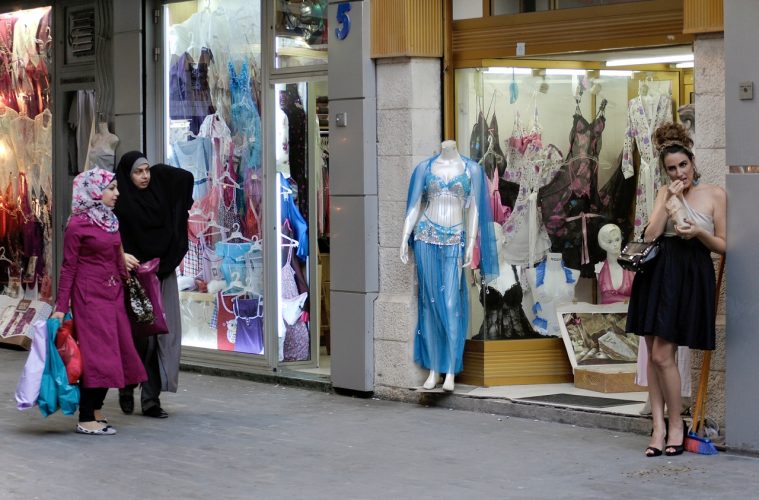By Musa Shadeedi
Photograph by Rafique Nasr el-Din – My.Kali archive, 2012
Photograph edited by Omar Braika
Translated by N.H.
This article is part of #69
Controversy surrounding the first edition of the International Women’s Festival began before it was held. Six days before the start of the festival, Lebanese writer and feminist researcher Nay El Rahi announced her withdrawal from the festival she was invited to speak at in response to the festival management’s announcement that they had invited a male speaker who was a “sexual harasser and sexual harassment apologist,” according to El Rahi in a post on her Facebook account. According to her, this man had, for the past decade, “verbally harassed, marginalized, bullied, and been violent toward women.” Despite this, the festival organizers chose to keep this speaker’s slot, prompting El Rahi to withdraw in refusal of sharing a platform with him.
The French Institute in Lebanon, the Lebanon Support Center, the Arab Institute for Women, the Political Science Institute at Saint-Joseph University, and the Joumana Haddad Freedoms Center organized the festival, which started on Thursday, February 27 and ended Sunday, March 1.
Then a surprising thing occurred: the Joumana Haddad Freedoms Center’s Facebook page posted about the festival by sharing a clip of a scene that was inspired by a play called Cage, which was written by writer and “feminist” Joumana Haddad, directed by Lina Abyad and performed by Dima al-Ansari. In the scene, a woman is seen wearing a giant niqab, which covers her body and the entirety of the chair she is sitting on. Her voice creeps out from underneath the layers of black cloth: “I see the workers sweeping the rubbish below. I imagine myself among the garbage bags. There is nothing for me to do except wait for death. I’m merely waiting for them to wrap me in a white sheet instead of this black one. What’s the difference? They have already buried me alive.” She pauses a little. “I steal breaths of air, then feel guilty for doing so.” When the full version was performed in 2016 at Metro al-Madinah Theater, the same character said in a sarcastic tone, “they call me a black garbage bag, a ninja costume, a tent”. This prompted loud laughter from the audience.
What is the difference between likening a niqab to a black garbage bag and likening women who don’t wear the hijab to an unwrapped lollipop covered in flies? In both cases, we objectify women and treat their minds, entities, personalities, and feelings as if they are possessions that belong to someone. We cannot deny that many women are oppressed and forced to wear the veil and niqab—which is something that should not be tolerated—but will likening them to a garbage bag liberate them in any way? Is feminism today, or at least the kind Joumana adopts, still falling into the trap of acting like a father who believes that reprimanding his son might motivate him to succeed at school? Isn’t this the first and most obvious form of patriarchy? Isn’t insulting women the most basic form of misogyny—regardless of the gender of the person insulting them? Wouldn’t it have been better for us to insult and make fun of the men who force women to wear the veil? And liken their minds to that of a garbage bag?
What should scare us more? Giving a platform to a person accused of sexually harassing and bullying women and allowing him to talk about how he supposedly “fights for women’s rights?” Or, a piece of a cloth wrapped around the head of a poor woman protesting against a corrupt regime in the streets of Beirut? Women who wear the hijab or the niqab are not a single, monolithic group. Some are scientists, illiterate, rich, poor, feminists, misogynists, homosexual, heterosexual, bisexual, fair-skinned, dark-skinned, transgender, and cisgender. Some willingly choose to cover, others are forced to. There are veiled boxers, fashion designers, political activists, and congresswomen. It is shameful to reduce this diverse group of women to a singular image and mock them in a comedic context.
Historically, wearing or abandoning the veil has shaped the struggle between patriarchal political forces and women’s bodies. A clear example of this took place in Iran between Reza Pahlavi, the secular dictator who is loyal to Zionism and the West, and the Islamic dictator Al-Khomeini following the success of his revolution, when the hijab was taken up by both as a tool of oppression.
On January 8, 1936, the Iranian shah, Reza Pahlavi, issued a decree banning the headscarf as a manifestation of backwardness and forcing Iranian women to wear European hats instead. When protests against his corrupt regime began to break out, some women protested by wearing a headscarf (even the non-veiled ones) in objection to this law. Writer Rabab Kamal says in her book Women in the Den of Islamic Fundamentalism, “Some of the progressive women who did this did not imagine that they would later on be forced to wear the veil.”
After the success of the Iranian Islamic Revolution in 1979, the new government issued a law imposing the veil on all women. The same women took to the streets unveiled to protest this law. This proves that they are neither for nor against the hijab. They are against being forced to either wear it or take it off, against the violation of the sanctity of their bodies. If the non-veiled women had preoccupied themselves with likening veiled women to garbage bags, the only beneficiary would have been the patriarchal dictatorship.
What should scare us more? Giving a platform to a person accused of sexually harassing and bullying women and allowing him to talk about how he supposedly “fights for women’s rights?” Or, a piece of a cloth wrapped around the head of a poor woman protesting against a corrupt regime in the streets of Beirut?

Iranian women demonstrate on International Women’s Day against Ayatollah Khomeini imposing the veil in 1979. Photo credit: Hengameh Golestan
Global violence against veiled women
The 2016 SETA Institute for Political, Economic and Social Research, “European Islamophobia” Report, “reported that, “data shows that it is 70% more likely for a Muslim woman to be attacked in the street.” The report documented cases in which Muslim women were physically assaulted in public spaces, streets and on buses because of their headscarves. They were also fired from many jobs, especially after recent waves of immigration. Anti-hijab discourse became one of the most important features of racism against Arab and Muslim refugees in the West. Islamophobia became normalized in order to oppress Muslim women, especially veiled women.
The matter is not limited to Europe. In Egypt, the vlogger Alaa Abu Zikry posted a video to YouTube,”The Hijab Crisis in Egypt,” in which she explains the difficulties she faced in the job market and employment companies because of her veil, and the many and varied ways in which employers tried to persuade her to remove her headscarf or just refused to hire her. If this policy of starving veiled women is the case, even in countries where the majority of women are veiled, you have only to imagine how women who wear the niqab are treated.
Judging women by their appearances is one of the highest degrees of misogyny, applied by people who see women as nothing but a shell, empty and lacking in intelligence. People who believe that a woman’s appearance determines whether she should be respected or despised. Some respect only veiled women, such as extremist religious men. Others only have respect for unveiled women, such as some so-called “feminists”.
1400 years ago
The history of the headscarf extends back to the time of the second Rashidun Caliph Umar ibn al-Khitab, when it was employed as a classist tool by Muslim leaders. A significant story told of an instance when a veiled maid entered a room ibn al-Khatib occupied. He got angry, because at the time, head and face coverings were for free women only, and slaves were forbidden from wearing the hijab; it was a tool to distinguish between the classes.. Umar ibn al-Khattab hit her, saying, “Are you trying to imitate free women?“
This is one of the most significant stories used by people who oppose the hijab to prove that it is an insult to women. A thousand and four hundred years have passed since this incident—the validity of which is unknown—and this customary function of the hijab ended with the end of slavery in the world. Yet, it seems that it has taken on new meaning today. Just as Umar Ibn al-Khattab deemed a veiled maid to be an insult to his classist system, many “feminists” today consider a woman’s wearing of the veil to be a threat to women’s liberation. In the past, a man considered an unveiled woman a slave; he had the right to do with her as he pleased. Today, some “feminists” consider women who wear the hijab to be a garbage bag they can kick whenever they want, eliciting laughter and applause from their audience.
Many feminists view the veil and niqab as an absolute insult to women, relying on texts that are 1400 years old to understand the phenomenon of the veil today, which I find very problematic. Today’s problems must be understood within their current context. Many women find comfort in the hijab and niqab. Even if we disagree with them, we cannot in any way force them to unveil, because the ones who impose unveiling are no different from the ones who impose the veil: both of them believe that women’s bodies belong to them, and this is not true.

